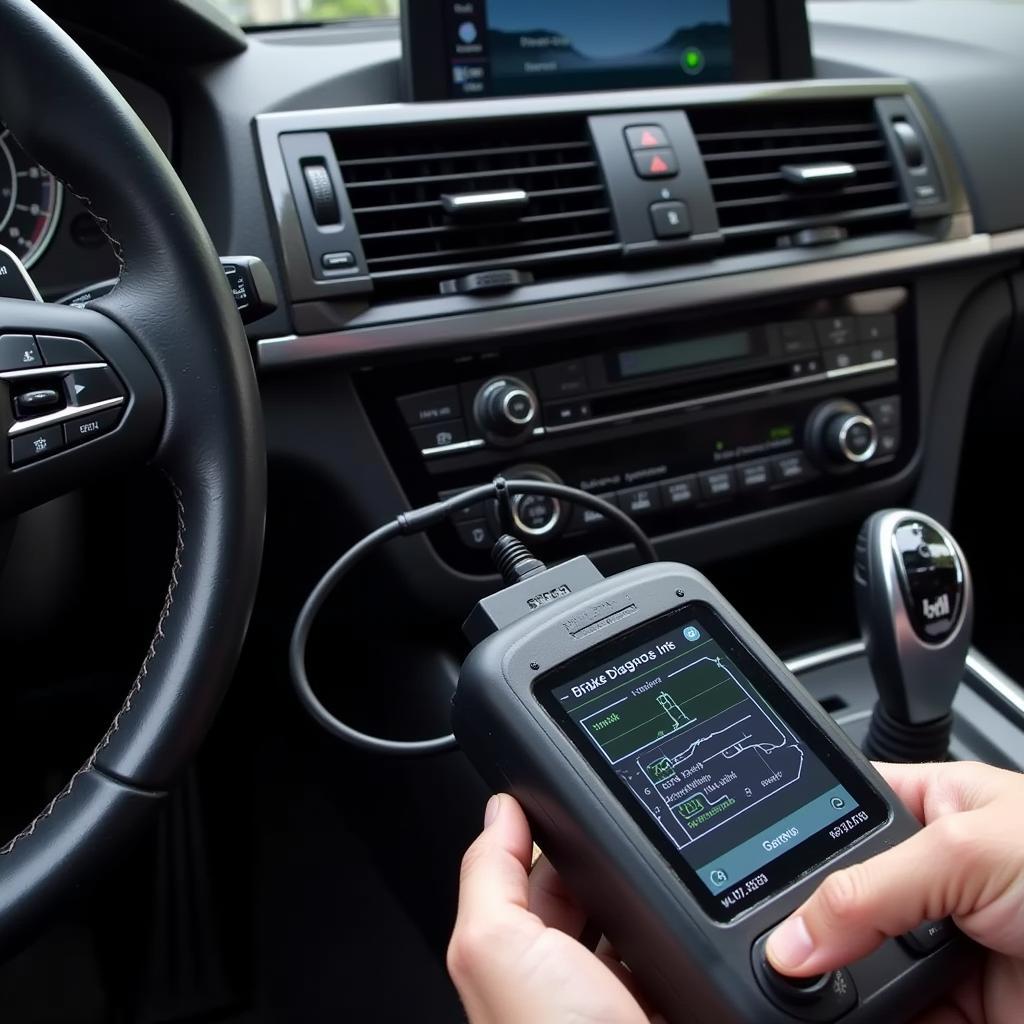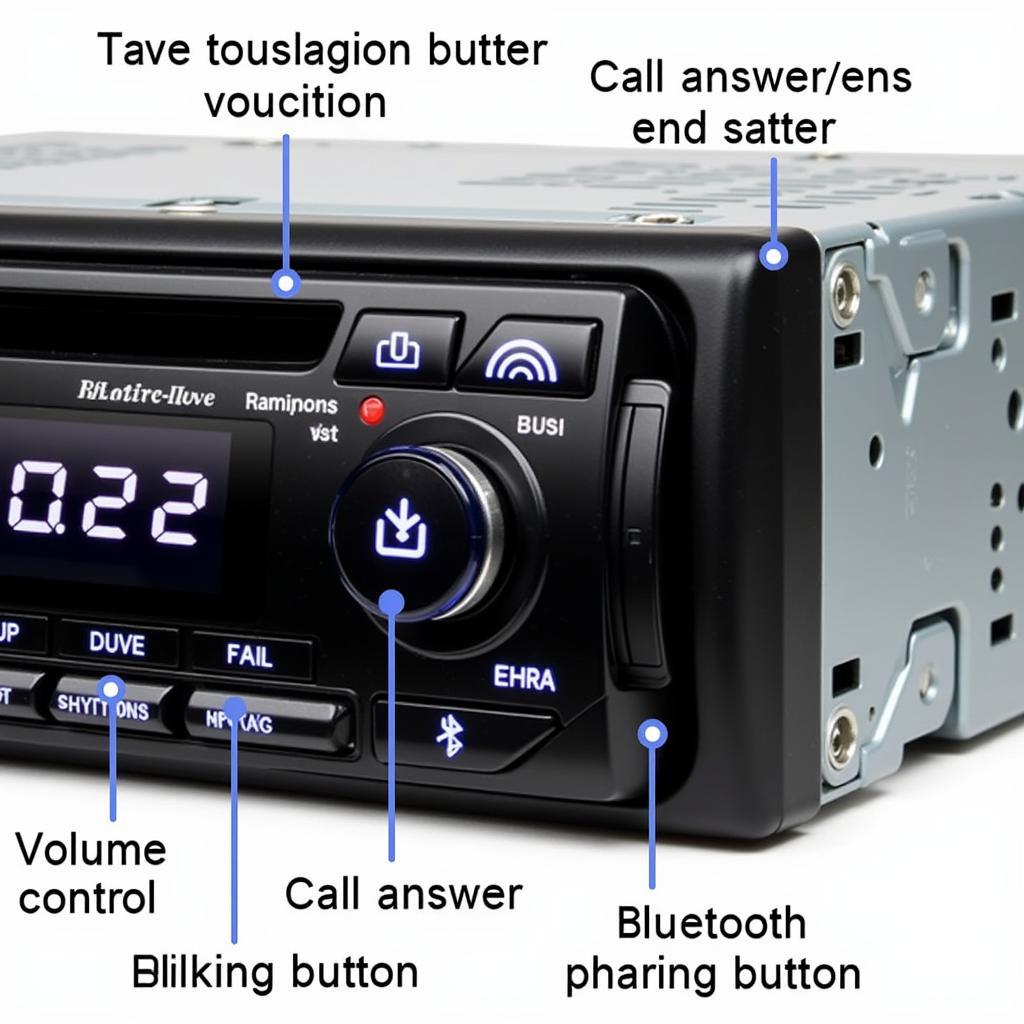Learning how to reset a BMW brake warning light can save you a trip to the mechanic and some unnecessary expense. This guide will walk you through various methods for diagnosing and resetting your BMW’s brake warning light, covering common causes and offering solutions for different models.
One common reason why the brake warning light illuminates is worn brake pads. Brake pads are designed to wear down over time, and when they reach a certain point, a sensor triggers the warning light. This is a normal part of vehicle maintenance. However, sometimes the light can come on due to other issues, such as a faulty sensor, low brake fluid, or problems with the ABS system. Knowing how to diagnose the problem is the first step in successfully resetting the light. reset brake warning bmw
Common Causes of a BMW Brake Warning Light
Several factors can trigger the brake warning light in your BMW. It’s essential to identify the root cause before attempting a reset. Here are the most common culprits:
- Worn Brake Pads: The most frequent cause is simply worn brake pads. Your BMW is equipped with sensors that detect when the pads are nearing the end of their lifespan.
- Low Brake Fluid: Low brake fluid can indicate a leak in the braking system, which is a serious safety concern.
- Faulty Brake Pad Wear Sensor: Sometimes, the sensor itself can malfunction, triggering the warning light even if the brake pads are fine.
- ABS Issues: Problems with the Anti-lock Braking System (ABS) can also illuminate the brake warning light. This often requires more advanced diagnostic tools.
- Parking Brake Engaged: While seemingly obvious, sometimes the parking brake can be slightly engaged, triggering the light.
How to Diagnose the Problem
Before attempting to reset the warning light, perform these checks:
- Visually inspect your brake pads: Look through the wheels to see if the brake pads appear thin.
- Check your brake fluid level: Locate the brake fluid reservoir under the hood and ensure the fluid level is between the minimum and maximum marks.
- Make sure the parking brake is fully disengaged.
bmw brake warning light red reset
Resetting the BMW Brake Warning Light after Replacing Brake Pads
After replacing your brake pads, you’ll usually need to reset the warning light. Here’s a general guide, but remember that procedures can vary depending on the BMW model.
- Turn the ignition to position two (do not start the engine).
- Press and hold the brake pedal for approximately 30 seconds. You might hear a clicking sound or see the warning light flicker or go off.
reset bmw x5 brake pad warning light
Using Diagnostic Tools for Resetting
For more complex issues, or if the manual reset doesn’t work, you may need a diagnostic tool. These tools can read and clear fault codes, providing more specific information about the problem.
 BMW Diagnostic Tool in Use
BMW Diagnostic Tool in Use
Why Won’t My BMW Brake Warning Light Reset?
Sometimes, even after addressing the underlying issue, the light persists. This could be due to a faulty sensor that needs replacement, or a more serious issue requiring professional attention.
“Always prioritize safety,” advises Hans Zimmerman, Senior Automotive Technician at Bavarian Autohaus. “If you’re unsure about any aspect of your brake system, consult a qualified technician.”
reset brake pad warning light bmw 1 series
When to Seek Professional Help
If you’ve tried the basic troubleshooting steps and the warning light remains, it’s best to seek professional help. A qualified technician can diagnose and repair more complex issues with your BMW’s braking system.
bmw e46 brake pad warning light reset
Conclusion
Knowing how to reset a BMW brake warning light is a valuable skill, but remember that safety is paramount. Always address the underlying issue causing the light to illuminate. If you’re uncertain, consulting a qualified BMW technician is always the best course of action. Don’t ignore the warning light – it’s there for a reason!


